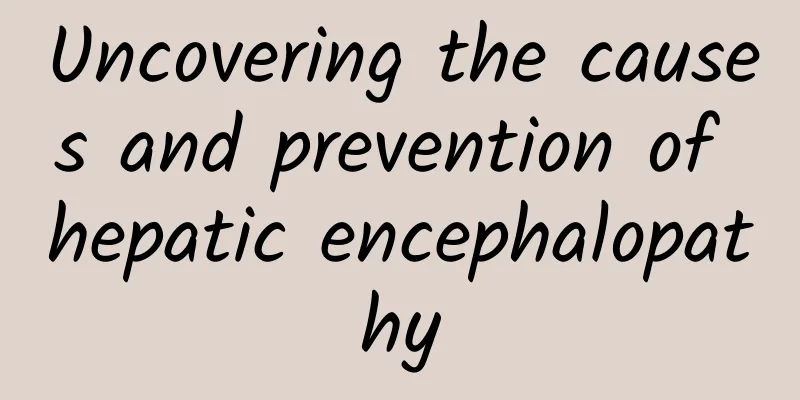Chest pain after menstruation

|
The symptoms of chest pain are actually very common. Generally, there are many reasons for chest pain. For example, because women are menstruating, they will always have breast pain due to menstruation. Some people may have rib fractures on the inside of the chest, costitis, long-term coughing, and cardiopulmonary problems, which are also causes of chest pain. Therefore, chest pain that occurs after the end of menstruation cannot be generalized. Here are some common conditions that can cause chest pain: Chest pain is a common symptom. There are many causes of chest pain, mainly due to lesions in the chest wall, pleura, lungs, cardiovascular system, mediastinum, esophagus and diaphragm. In addition, intercostal neuropathy often causes chest pain. Therefore, diagnosis is rather difficult and often requires differentiation and identification based on the nature of the chest pain, accompanying symptoms, location and time of occurrence, etc. 1) Chest wall disease It is mainly caused by lesions of the chest wall muscles, ribs or intercostal nerves. The main feature is that the pain is often fixed at the site of the lesion, and there are many obvious tender points locally. like: 1. Intercostal neuralgia, with a tingling sensation along the intercostal nerves, which worsens with coughing and breathing. 2. Chest pain caused by rib fracture, with obvious history of injury or long-term severe coughing, obvious tenderness in the painful area, which is more obvious when squeezed. 3. Chest pain caused by herpes zoster in the chest and abdomen may cause blisters to appear locally, and the pain is generally not related to coughing or breathing. 2) Diseases of the trachea, bronchus, lungs and pleura The main feature is that the pain is often related to breathing and coughing. like: 1. The chest pain of spontaneous pneumothorax occurs suddenly, accompanied by difficulty breathing, coughing, shortness of breath, and even serious conditions such as cyanosis and shock. 2. In pleurisy, the pain is stabbing, and is most noticeable in the ribs where the chest expands the most. 3. The chest pain of trachea and bronchitis is significantly aggravated when coughing and breathing, and is accompanied by a burning sensation in the chest. 4. In lung diseases such as pulmonary infarction, the pain is mostly localized in the affected area and may feel like a knife cutting. It will get worse with breathing, coughing, or movement. 3) Circulatory system diseases Common diseases include coronary heart disease, pericarditis, etc. 1. The characteristics of angina pectoris attack are strangulation, pressure or fear in the left anterior chest or behind the sternum. The attack usually lasts about 30 seconds and can be relieved by taking coronary vasodilators. 2. In addition to the above symptoms, chest pain caused by myocardial infarction can also radiate to the left shoulder, inner side of the left arm, and sometimes to the chin, neck, and even upper abdomen. The pain is tight and severe, lasting for more than 30 minutes. Taking coronary vasodilation drugs has no significant effect. At the same time, symptoms such as arrhythmia may occur. 3. Pericarditis. The pain is sometimes very similar to myocardial infarction, but it is aggravated by coughing, breathing, changes in body position, and lying on the left side. The pain also lasts for a long time and cannot be relieved by coronary vasodilators. 4) Digestive system diseases 1. Chest pain caused by cholecystitis and cholelithiasis is mainly in the right lower chest or right back, chest, and abdomen. The pain is mostly colic and pain, accompanied by nausea, vomiting, and abdominal distension and pain. . 2. Acute pancreatitis can cause pain in the pit of the stomach, left chest wall, upper abdomen and waist, transverse waist-like pain, and gastrointestinal symptoms that are not relieved by coronary vasodilators. 3. In addition, stomach and duodenal diseases may also cause pain in the lower chest, but generally there are gastrointestinal symptoms |
<<: Brown discharge 6 days after abortion
>>: Black discharge a few days before period
Recommend
What fruits are good for pelvic inflammatory disease
Pelvic inflammatory disease is a serious gynecolo...
What are the causes of female congenital infertility?
Among female infertility patients, some are due t...
Will I grow taller after my period?
When girls enter puberty, they will normally have...
What should women pay attention to when they have kidney deficiency and low back pain?
I believe that many female friends have experienc...
Purulent vaginal discharge
Physical health is particularly important. Gyneco...
The impact of ring on the body
An IUD is a method of contraception for women. Th...
How long does it take for the donkey-hide gelatin cake to cool before it can be cut? What causes the donkey-hide gelatin cake to be so soft?
Donkey hide gelatin cake looks like a block of br...
What should I do if sanitary napkins cause inflammation?
For adult women, sanitary napkins are daily neces...
How to solve the odor of girls' private parts
Many people will have questions about how to solv...
Pictures of women with more armpit hair
Everyone loves beauty, especially women. In summe...
Stop mistreating your stomach! These habits are quietly "destroying" your stomach
Today I have to talk to you about behaviors that ...
Is it normal for my period to be bright red?
Menstruation is no stranger to women. Usually, fe...
Symptoms of postpartum depression
Giving birth will bring about huge changes to a w...
Whitening around the female urethra
The urethra is an important part of a woman's...
What are breast fibroids? What are the causes of breast fibroids?
In recent years, breast diseases in women have be...









